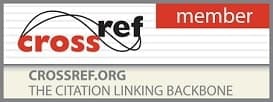
International Journal of Agriculture Extension and Social Development
2020, Vol. 3, Issue 2, Part B
Dietary diversity score (HDDS) in measuring food security status among refugees in the White Nile State, Sudan
Reem Fadul Kabbar Mohamed, Abdelmoniem Awadalla Babiker, Wefag Tajeldin O Mohammed
This paper was designed to assess food security status among Refugees in the White Nile State, Sudan by used Dietary Diversity Score (HDDS) method that is meant to reflect, in a snapshot form, the economic ability of a household to access a variety of foods. The study was based on primary data collected through the questionnaire. The sample was selected using a simple random technique, three camps were selected from seven camps, most of the camps populations are women and children, a sample size was 90 respondents. These camps are more or less homogeneous and hence the sample of 90 respondents is judged to be adequate. The dominant tribes were Sholok and Newir tribes. The results of the analysis reveal that most of the refugees fall within the age group between 35-45 years, family member’s 7-10 individuals, According to 2018 survey the respondents depend on food donations in refugee’s camps, ration distributed by household members, some of the refugees consider the ration distributed insufficient according to household consumption. Water is available in the study area but the source of water was far from their residence, not ready for utilization because it is not pure water, there is one health centre in any camp. They take medicine for the health centres. The proxy measure for HH food access examined 7-16 targets of food consumption. The high group and often their consumption consist of cereal groups, surge group, legumes, and nut group. The rare consumption was from meat and fish group. The not consumption from milk and other dairy products group and fruit and vegetables group. Half of the respondent’s don’t consume all food groups. The high percentage recorded by low food value (sugar and oil) but the high-value food recorded low percentage a more diversified diet is highly correlated with such factors as caloric and protein adequacy, percentage of protein from animal sources (high-quality protein), this result detected lack in access to 5 groups (meats, eggs, fruits, milk, and vegetables) the most important high-value groups that supplies body with all vitamins minerals protein needed
Pages : 71-75 | 1486 Views | 703 Downloads

How to cite this article:
Reem Fadul Kabbar Mohamed, Abdelmoniem Awadalla Babiker, Wefag Tajeldin O Mohammed. Dietary diversity score (HDDS) in measuring food security status among refugees in the White Nile State, Sudan. Int J Agric Extension Social Dev 2020;3(2):71-75. DOI: 10.33545/26180723.2020.v3.i2b.59





